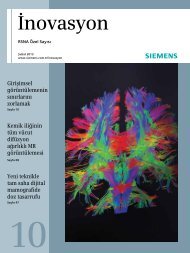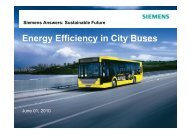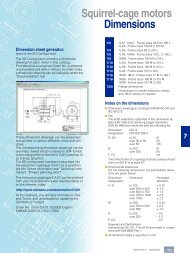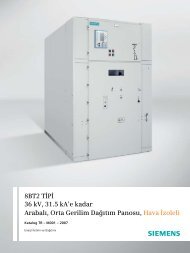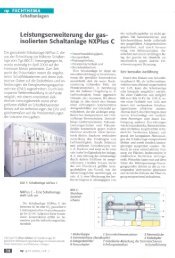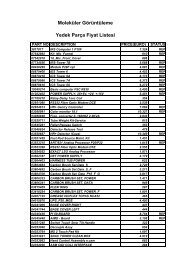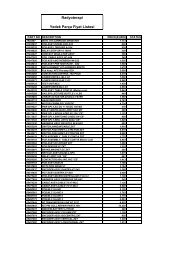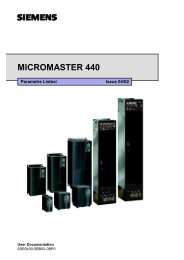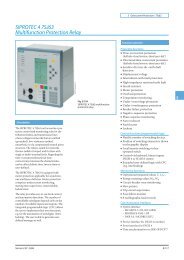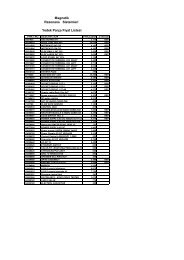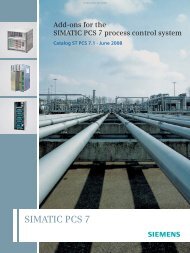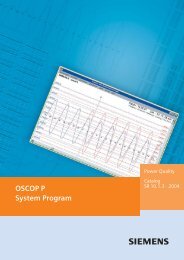Building automation â impact on energy efficiency - Siemens ...
Building automation â impact on energy efficiency - Siemens ...
Building automation â impact on energy efficiency - Siemens ...
You also want an ePaper? Increase the reach of your titles
YUMPU automatically turns print PDFs into web optimized ePapers that Google loves.
In <strong>efficiency</strong> class C, the difference the temperature setpoints for heating and<br />
cooling is very small at ca. 1 K (minimum dead <strong>energy</strong> band). Operati<strong>on</strong> of the<br />
HVAC plant starts two hours prior to occupancy and ends three hours after the<br />
end of the occupancy period.<br />
BAC <strong>efficiency</strong> class B<br />
Efficiency class B applies better adapted operating times by optimizing switching<br />
<strong>on</strong>/off periods. The current temperature setpoints for heating and cooling are<br />
m<strong>on</strong>itored by superposed functi<strong>on</strong>s, resulting in a dead <strong>energy</strong> band that is<br />
greater than the <strong>on</strong>e for <strong>efficiency</strong> class C.<br />
BAC <strong>efficiency</strong> class A<br />
Time of day<br />
Occupancy<br />
Setpoint heating Setpoint cooing<br />
Occupancy<br />
Setpoint heating Setpoint cooing<br />
Time of day<br />
Efficiency class A provides additi<strong>on</strong>al <strong>energy</strong> <strong>efficiency</strong> by applying advanced<br />
BAC and TBM functi<strong>on</strong>s as well as adaptive setpoint adjustments for cooling or<br />
demand-c<strong>on</strong>trolled air flows.<br />
80



